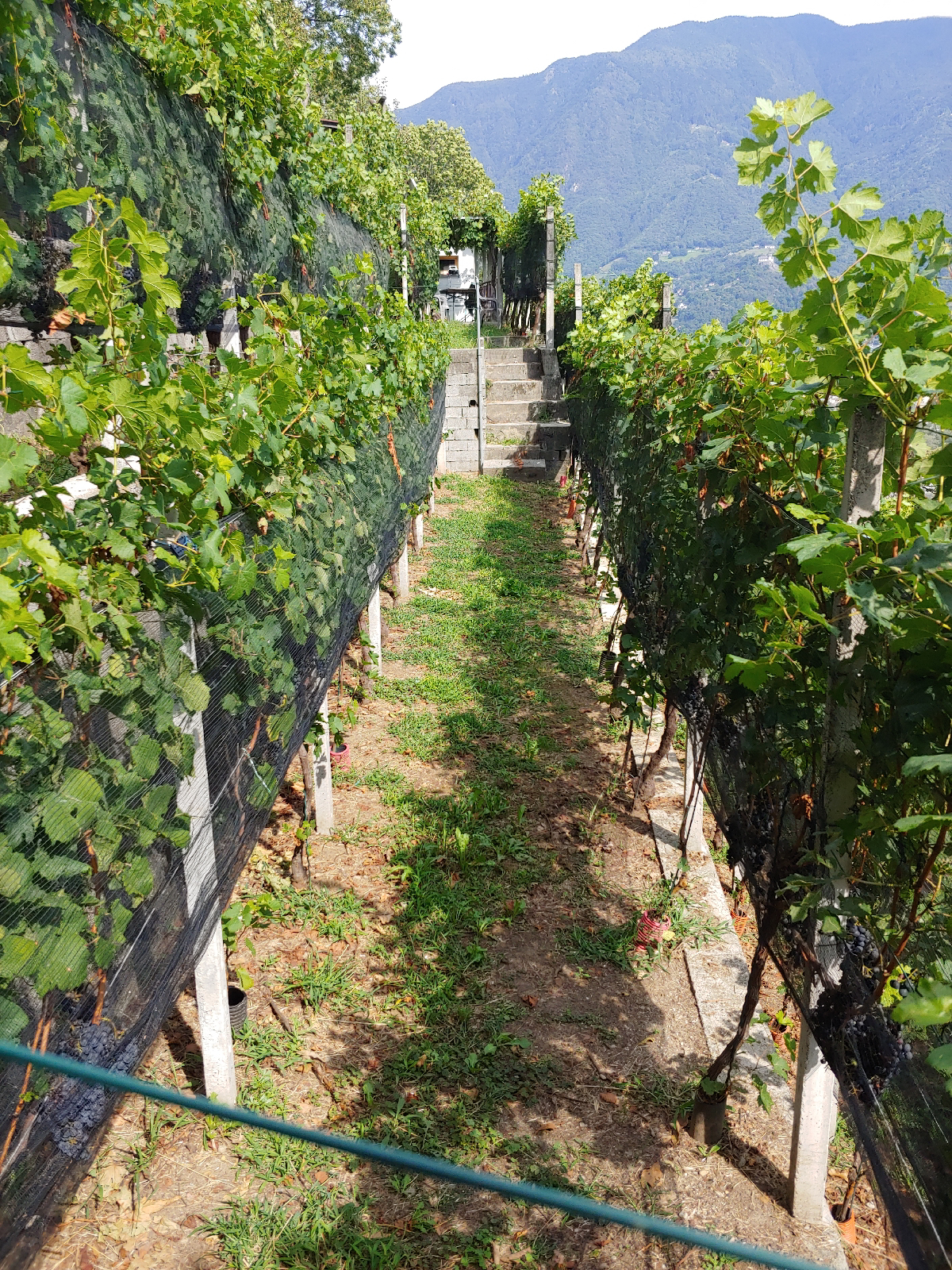August 25, 2022
At St. Gervais-La Fayet, a meter-guage rail line begins. The trains, called the Mont Blanc Express, climb up to Chamonix and beyond. The line begins at 580 meters and summits at 1,365 meters at Montroc-Le Planet, just east of Chamonix. Despite the steep grades (up to 9%) the line operates without cogs, although a rail is installed in the middle in the steeper sections to assist with braking. On the French section, power is supplied by a third rail.
The train has extra windows at an angle high on the sides to help the passengers enjoy the dramatic mountain scenery. August being high season, the train was jam packed with people, getting more crowded as we approached Chamonix. Most people got off here, including a big group of kids, who were carefully counted by their guides on the platform.
We changed to a Swiss train at Valloricine, the last station in France (2). The train switched on the fly from the third rail to overhead via a raised pantograph. I assumed this was a Swiss standard, but the line in Switzerland kept switching from overhead to third rail for power (3).
The Swiss rail lines hugs the edge of a narrow gorge on the descent, with villages perched on narrow shelves above the river far below. As we began the steep descent into the broad Rhone Valley near the end of the line (20% downgrade and with cogs), my wife looked ahead and said "the track looks like it disappears off a cliff, I feel like I'm at the top of a roller coaster." At Martigny, we bid adieu to two French couples who seemed to share our enthusiasm for the ride, and caught a mainline train to Visp.
At Visp, we connected to another meter-guage, partly cog, train toward Zermatt. On the climb, a voluble man from Ülm Germany chatted with us. Pointing to a field with a few cows, he said "In Switzerland, 5 cows, in America, 10,000 cows." Due to a signal fault and short bus substitution, we arrived about an hour late in Zermatt (4).
A friend back home had a Zmutt sticker, which I said sounded like Zermatt. He replied that it was a village near Zermatt, which I thought was a joke (until I looked at a map). Zmutt is tiny village (about 20 slate-roof houses) perched about 1,000 feet above Zermatt. We hiked the Zmuttweg, a gravel bridal path up the valley to the village (5).
We stopped at a Café in Zmutt (6) for a drink and to enjoy the spectacular scenery. We returned via the Eidelweissweg, a narrower, more traditional mountain trail higher on the side of the valley. We enjoyed the flowers in the Alpine fields (7), heard cow bells clanging (8), and watched a marmot scurry about as we passed. The trail passes the oldest barn in Europe, dating to 1291 (9). As we descended to Zermatt, we heard the church bells in town chiming the 7:00 hour. About 6 miles and 1,100 foot vertical rise.
(1) The line was completed in 1908 and facilitated the 1924 Winter Olympics at Chamonix.
(2) The train sets are jointly owned by the French and Swiss Railways, but operated separately, at least at this time of year.
(3) I tried to figure out the pattern. The third rail always seemed to be used with the cogs, but some non-cog sections also had a third rail. The train driver has a lot to pay attention to with different power sources and cog and adhesion sections of the line (a).
(a) I noticed trackside signs guiding the driver, with white circles for cog operation and a yellow diamond with a black bar through the middle signalling the end of overhead power.
(4) "How unSwiss," the hotel clerk said.
(5) About halfway up, I sensed my blood sugar falling, so I plopped down on the side of the path for a snack I keep with me for such occassions. A friendly hiker stopped to ask if I were OK. I explained and she kindly offered me a snack, which she keeps with her for the same reason (b).
(b) Because of our late arrival in Zermatt, our lunch was limited to a bowl of yogurt.
(6) While the village traditionally housed cattle and sheep farmers, about 1/2 the houses now seem to be Cafés catering to day hikers.
(7) Apparently none of the flowers we saw were edelweiss. A guy at the hotel told us later that eidelweiss are rare and illegal to pick
(8) In the final movement of Mahler's 7th symphony, written while the composer was in the Austrian Alps, the percussion section plays an instrument that does sound like Alpine cow bells.
(9) I don't know who keeps track of these things or how they are sure no barn is older.
View through the high windows
Why it's called the Mont Blanc Express
Descending into Switzerland
Swiss village on valley side
Sign for cog engagement
Valley of the Upper Rhone
On the train ascent to Zermatt
Milky green water from Glacier melt
Zmuttweg, the trail up to Zmutt
Views from the edelweissweg on the descent






























































